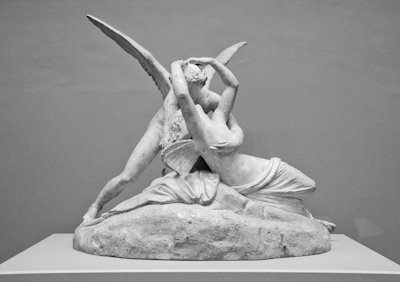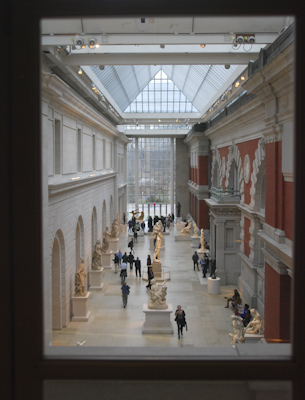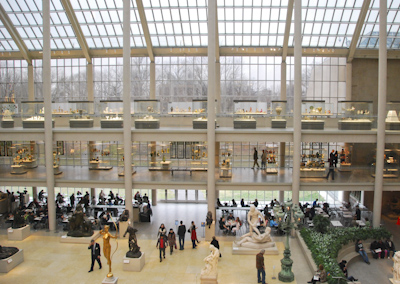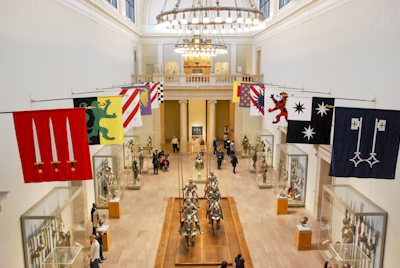Sunday – January 13, 2013
We enjoy hopping into the car early on Sunday mornings to drive to the Metropolitan Museum of Art before the tourists arrive later in the day. It’s a short pleasant ride into the city without much traffic.
There were several exhibits we wanted to see this winter before they ended. Check the Museum’s website for additional information. Unfortunately, photography is not permitted in the temporary exhibit rooms, so my photos were taken in the main galleries of the imposing building.
We first went to the exhibit entitled, Faking It: Manipulated Photography Before Photoshop. Here on display were photographs taken and manipulated in dark rooms by dozens of very patient and talented photographers during the last century. It was a fun exhibit and we chuckled at the photos. The exhibit across the hall entitled, After Photoshop: Manipulated Photography in the Digital Age was less than thrilling for me.
The Henri Matisse exhibit was well advertised and called “the blockbuster of the season”. I had read that it included only 48 of the French artist’s works and was curated to show Matisse’s range of experimentation and creativity. I love the bright colors and vivid patterns in the paintings. I enjoy revisiting Matisse’s works because they are always fresh and surprising.
Then we found the Sau-Wing Lam Collection of Rare Italian Stringed Instruments exhibit. It’s always exciting to see rare and beautiful instruments and marvel at the craftsmanship of the pieces. They are incredible works of art. It would be nice to hear the instruments played as well.
The eye-opening exhibit for us was the Extravagant Inventions: Princely Furniture of the Roentgens. We had never heard of Abraham Roentgen and his son David who, we learned, were Europe’s premier cabinetmakers from 1742 to the early 1800s. Their clients included Marie Antoinette and the kings of France, Catherine the Great of Russia, and other royals and wealthy people in Europe at the time. The pieces of unbelievably gorgeous furniture were accompanied by videos which demonstrated how the pieces unfolded with panels, secret drawers, ledges, and drawers. Each piece of furniture was a complicated mechanical device with internal moving parts. Most of the furniture were from private collections or European museums and never before seen in the U.S. I highly recommend viewing any piece of Roentgen furniture any where possible.
 Plaster Cast of Canova’s Cupid & Psyche
Plaster Cast of Canova’s Cupid & Psyche
The Metropolitan Museum of Art continues to improve their website to include detailed descriptions and photographs of their collections and their special exhibitions. It is a wonderful place to spend a few hours on a Sunday morning without the crowds.




